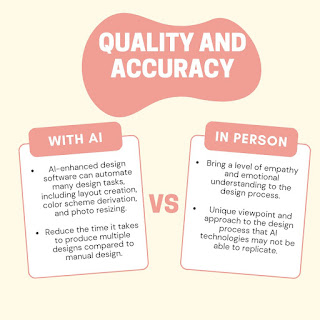Personal design is an age-old practice requiring human creativity, intuition, and innovation. Typically, a designer collaborates with clients to understand their requirements, preferences, and objectives. This strategy results in a product that has been customised to the client's preferences. One of the greatest benefits of designing in person is the ability to make changes and iterations in real time as the project develops. This contributes to the client's satisfaction with the ultimate product.
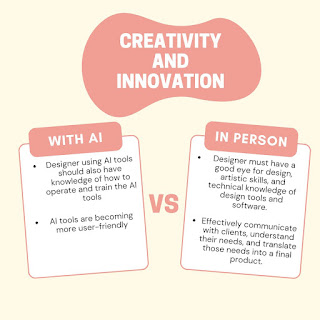
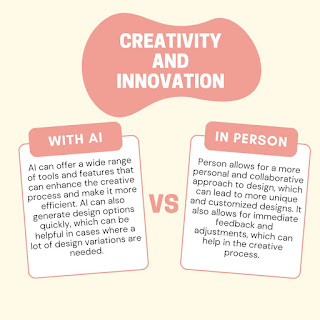
On the other hand, AI has emerged as a promising design alternative. AI software can efficiently analyse data and generate design options. This method can save time and money while providing a variety of design options that a human designer may not have considered. AI can also eliminate personal biases and limitations, resulting in more objective and data-driven designs.
Designing is an integral part of our lives. Whether it's creating a new logo or designing a website, the process of designing has evolved with technology. While traditional designing methods include in-person designing, the advent of Artificial Intelligence (AI) has revolutionized the industry.
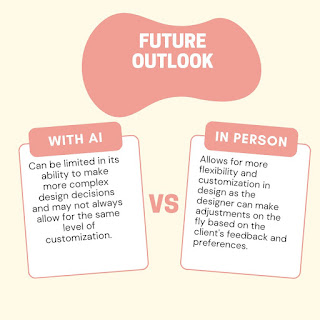
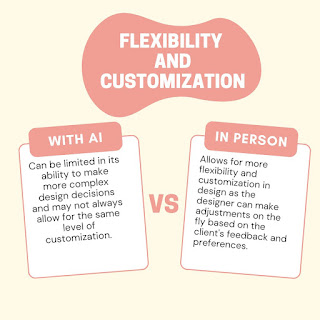
Pros:
Personal touch: Designing in person
involves face-to-face communication,
which allows the designer to understand
the client's requirements in a more
personal way. This leads to a more
customized and personalized end
product.Human creativity: Individual
designers use their creativity and
imagination to create one-of-a-kind and
original designs. They are able to make
instantaneous alterations and
modifications based on client feedback,
resulting in a more collaborative design
process.
Greater control: Designers who work
in-person have greater control over the
final product because they can supervise
each step of the design process
Cons:
Limited reach: In-person designing is
limited to clients who are within the
geographical reach of the designer. This
means that designers may miss out on
potential clients who are located in
other parts of the world.
Time-consuming: In-person designing is
often a time-consuming process as it
requires multiple meetings and
consultations with the client. This may
lead to delays in the project's
completion.
Higher cost: Designing in person can be
more expensive than designing with AI,
as it requires more resources and time.
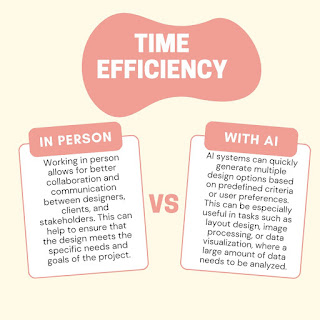
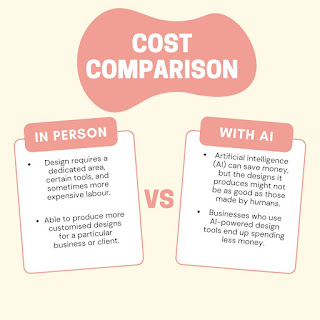
Pros:
Speed: Designing with AI is much faster
than traditional in-person designing.
AI-powered software can generate
multiple designs in a matter of seconds,
which can save time and effort.
Cost-effective: AI-powered designing is
often more cost-effective than in-person
designing, as it requires fewer
resources and less time.
Large scale: With AI, designers can
create designs at a large scale, which
is particularly useful for businesses
that require large quantities of
designs, such as print-on-demand
merchandise or social media content.
Cons:
Lack of personal touch: AI-powered
designing lacks the personal touch that
comes with in-person designing. AI
cannot fully understand the client's
vision, which may result in less
customized designs.
Limited creativity: While AI-powered
software can generate multiple designs
quickly, they are often less creative
and original than designs created by
human designers.
No control over software: Designers who
use AI-powered software have no control
over the software's algorithm, which may
result in unexpected or unsatisfactory
designs.
